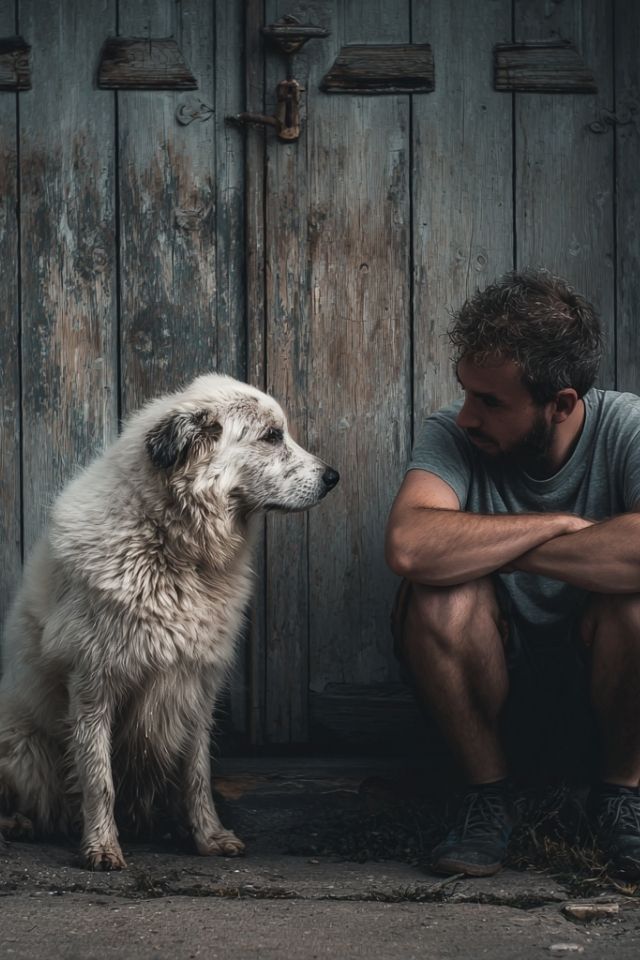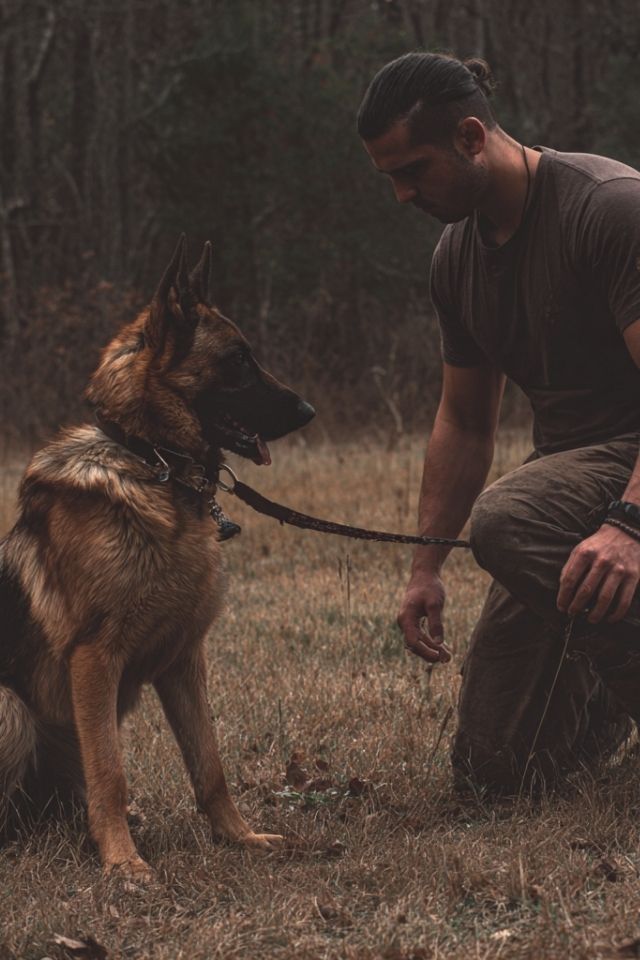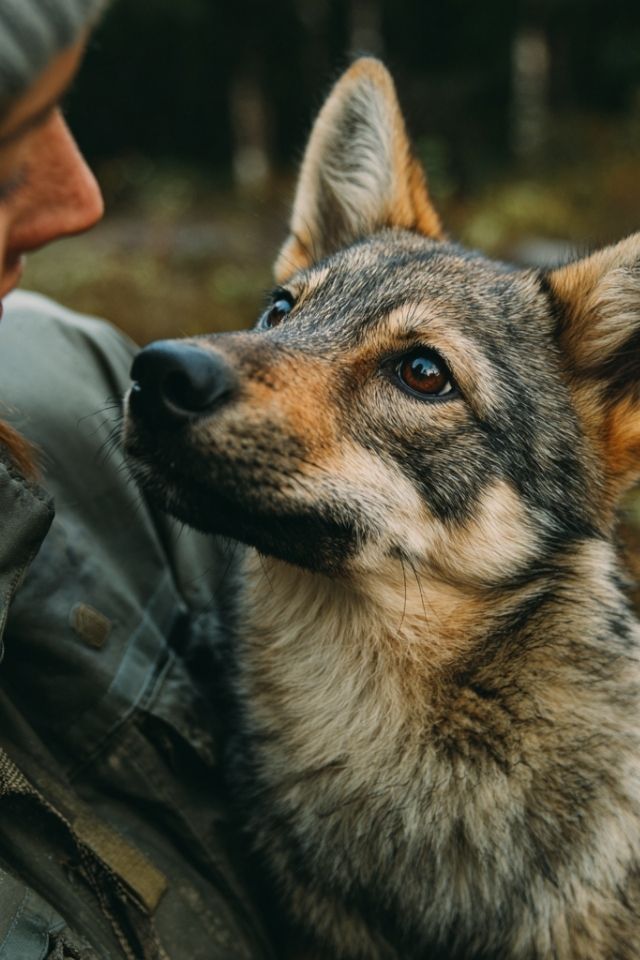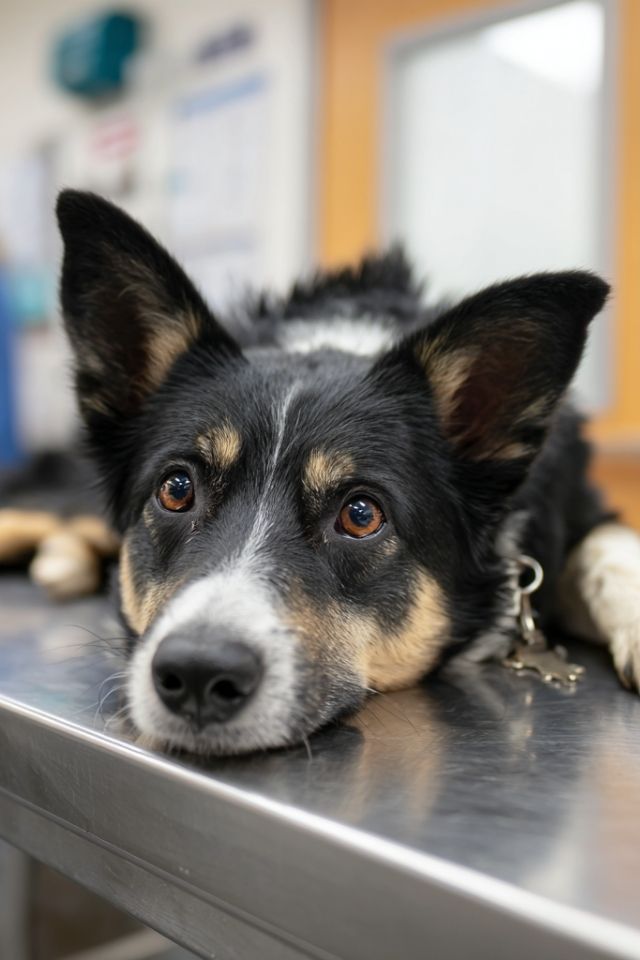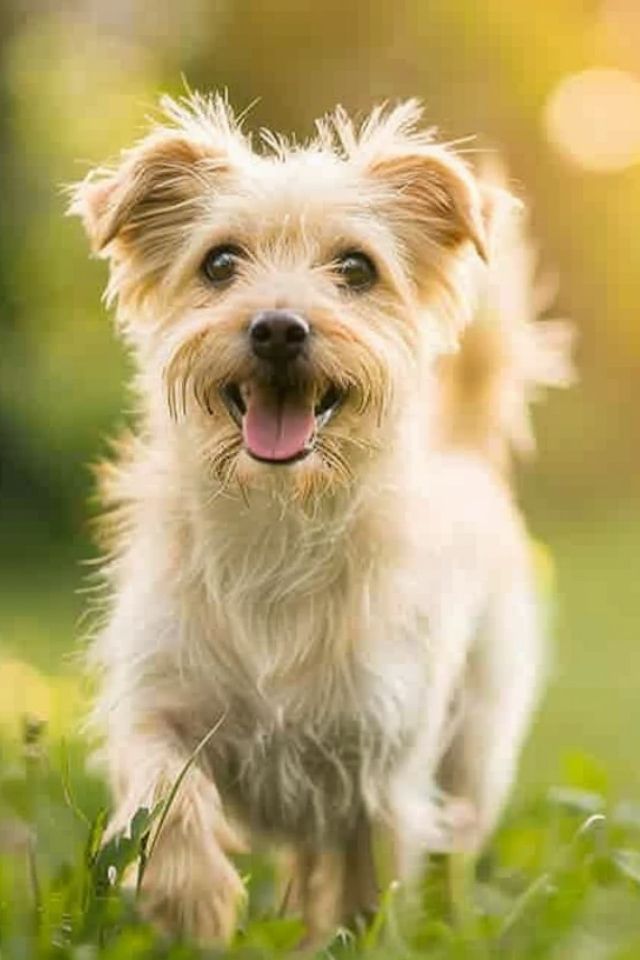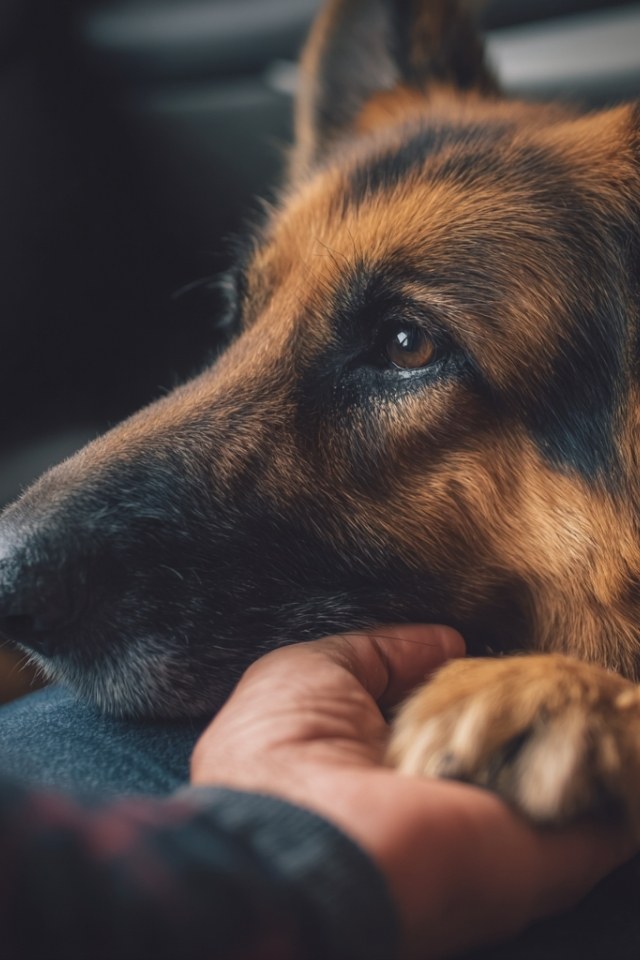There’s a moment every dog guardian knows—the one where you stand in a park, your familiar command hanging in the air between you, and your dog looks at you as if you’re speaking a language they’ve never heard. Not defiance in their eyes. Something else. Something quieter. Confusion, perhaps. Or the searching look of someone trying to remember something just beyond reach.
You’ve practiced this a hundred times. Your living room has witnessed the patient repetition, the treats exchanged, the small triumph of understanding blooming between you. Yet here, beneath an open sky with unfamiliar ground beneath their paws, it’s as though the connection has frayed. The Invisible Leash—that wordless understanding you’ve built—suddenly feels impossibly long.
This isn’t a story about disobedience. It’s a story about memory, context, and the beautiful complexity of how your dog experiences the world. Let us walk through this together, and you’ll see: your dog hasn’t forgotten. They’re simply searching for a memory that exists in a different place.
The Geography of Memory
Picture the afternoon your dog first understood “sit.” Not just the moment they lowered their haunches to the floor, but the entire world that surrounded that moment. The slant of light through your window. The particular acoustic signature of your voice in that room—how it bounced off familiar walls, softened by curtains and carpet. The scent of dinner beginning in the kitchen. Your emotional state: patient, focused, warm with encouragement.
Your dog’s brain wasn’t recording a simple word-to-action equation. It was encoding a place. A feeling. An entire sensory landscape.
The World Your Dog Remembers:
- The way afternoon light pools on hardwood floors
- How your voice sounds when walls embrace it, making it intimate and clear
- The cool smoothness or warm texture of the ground beneath their body
- That particular emotional frequency between you—calm, connected, safe
- The ambient symphony only they can fully hear: the refrigerator’s hum, distant traffic, the house settling
- Your scent signature, stronger in enclosed spaces, mixed with home
This is what neuroscience calls episodic memory, but we might call it something more honest: your dog’s memories live in places. Not just in their mind, but in the intersection of mind and world. When they learned “sit,” they learned it as part of that specific afternoon, in that specific room, with that specific version of you.
Now transport them to the park. The ground feels different—grass instead of floor, uneven and alive with messages from a hundred other paws. Your voice travels differently here, swallowed by open air instead of held by walls. There are a thousand scents competing for attention, each one carrying information, stories, warnings. And emotionally, they may feel different too—more alert, more uncertain, more aware that this is not the safe container of home.
Their brain searches for the “sit” file, but the environmental password has changed. Not all of it—your voice is still yours, the word itself unchanged—but enough has shifted that retrieval becomes a cognitive puzzle rather than an automatic response. They haven’t forgotten. The memory simply lives somewhere else, and they’re standing in foreign territory.
When the World Speaks Louder Than You
There’s a particular ache in calling your dog’s name and watching their attention splinter away from you, pulled by something you can barely perceive. A scent on the wind. Another dog’s presence three blocks away. The electromagnetic whisper of the world that we, with our diminished senses, can barely imagine.
Your dog processes reality through a sensory lens so different from yours that it’s almost another dimension. What you experience as a quiet park, they experience as a symphony of information—each blade of grass holding messages, each breeze carrying news, each sound layered with meaning you’ll never fully access.
When you ask them to sit in this overwhelming sensory landscape, you’re asking them to filter out all of that urgent, fascinating information and focus on your single verbal cue. It’s not that they don’t care about your request. It’s that their attention is a finite resource, and the environment is bidding for it with compelling urgency.
The Silent Language Your Dog Reads:
- How you hold your body—open or closed, certain or hesitant
- The precise placement of your hands, the angle of your shoulders
- Whether your eyes meet theirs directly or glance away
- The micro-expressions flickering across your face before you speak
- How your weight shifts from foot to foot, telegraphing your internal state
- The emotional color of your voice—the tension or ease beneath the words
They learned “sit” with a complete package of these cues. Perhaps you always leaned forward slightly. Perhaps your hand rose to a certain height. Perhaps your eyebrows lifted in a particular pattern of encouragement. These weren’t conscious additions to your command—they were simply you, being you, in that moment.
But in the park, you might stand differently. The stress of the public space, the awareness of other people watching, the slight anxiety about your dog’s behavior—all of this changes your body language in subtle ways. You’re trying to give the same command, but you’re delivering it in a different wrapper. And for your dog, the wrapper was always part of the message.
This is what creates the NeuroBond—that deep, neural-level connection where communication happens through channels both conscious and unconscious. When it works, it feels like magic. When it breaks down, it feels like betrayal. But it’s neither. It’s simply the complexity of trying to speak across species, across sensory worlds, across contexts.
The Emotional Geography of Learning
Here’s something we often forget: emotions aren’t separate from memory. They’re woven into it, inseparable, integral. Your dog didn’t just learn “sit” as a behavior. They learned it as an emotional experience.
If they learned it in calm, they encoded it with calm. If they learned it in your patient, encouraging presence, they encoded it with safety and connection. The emotional landscape of learning becomes part of what triggers recall.
So when you ask them to sit in a stressful environment—where they feel uncertain, where their sympathetic nervous system is slightly activated, where they’re managing low-level anxiety about all these unfamiliar variables—the emotional mismatch itself creates a barrier to recall.
When Your Dog’s Stress Speaks:
- Eyes showing white crescents, that whale-eye expression of worry
- A body frozen in place, unable to move or respond
- Attention scattered like startled birds, unable to land on anything
- Breathing that quickens despite comfortable temperatures
- The way they suddenly don’t hear their own name
- Small displacement behaviors—a sudden scratch, an urgent sniff of nothing in particular
- The pull toward escape, toward anywhere but here
These aren’t signs of stubbornness. They’re signs of a nervous system overwhelmed, trying to manage too much at once. In this state, asking for “sit” is like asking someone to solve a math problem while their house alarm is blaring. The cognitive resources simply aren’t available for the task.
This is where Soul Recall becomes important—that deeper level of connection that goes beyond trained behaviors to the fundamental relationship between you. When your dog is overwhelmed, what they need isn’t a stricter command. They need your presence as an anchor. They need you to recognize their struggle and meet them there, not with frustration, but with understanding.
The Path to Everywhere: Training as a Journey Through Worlds
There’s a training philosophy that tries to achieve perfection in one place before venturing into the world. It’s well-intentioned but fundamentally misunderstands how canine memory works. You cannot build a bridge to everywhere from a single shore.
True generalization—the kind where “sit” means sit in living rooms and parks and busy streets and quiet forests—requires experiencing the command in all those places. Not as a test, but as part of the original learning. Each new context where you practice isn’t a challenge to overcome. It’s another layer of understanding being woven into the neural tapestry of what “sit” means.
The Journey Through Contexts:
- The sanctuary of home, where everything is safe and known
- Home with small disruptions—the television, voices, gentle music
- Different rooms, each with their own acoustic personality and emotional texture
- Your yard, where indoor safety meets outdoor complexity
- The threshold space—your front yard, where the neighborhood begins to enter the equation
- Quiet public spaces during soft hours, when the world is gentle
- Places with mild movement—a few people, a few dogs, manageable stimulation
- The gradual crescendo toward complexity, always respecting your dog’s threshold
- The challenging spaces you once avoided, now navigable together
- The full circle back to all contexts, weaving them into a complete understanding
This isn’t a ladder to climb. It’s a landscape to explore together, each environment teaching your dog something new about what “sit” means when everything else changes. You’re not testing their obedience. You’re expanding their understanding. You’re teaching them that your connection transcends context, that the NeuroBond between you holds steady even when the world shifts beneath your feet.
And here’s the gift hidden in this approach: as you move through contexts together, you’re not just teaching commands. You’re teaching your dog that they can trust you in unfamiliar spaces, that your presence is a reliable anchor even when everything else is strange. This is relationship-building disguised as training.
Reading the Moment: When “No” Means “I Can’t Yet”
There’s a fundamental translation error we make as humans. When our dog doesn’t respond to a known command, we interpret it through our understanding of choice and will. We think: they’re choosing not to obey. They’re being stubborn. They’re testing me.
But stand inside your dog’s experience for a moment. They’re in an unfamiliar place, processing information at a rate and depth you can barely imagine. Their nervous system is managing the baseline stress of novelty. Their attention is being pulled in a dozen directions by stimuli that feel urgent and important. And then you offer a verbal cue that, in their neural filing system, is associated with completely different circumstances.
They’re not choosing disobedience. They’re experiencing cognitive overwhelm. The pathway to that behavior—the neural route that connects your cue to their action—is obscured by noise. It’s not that the path doesn’t exist. It’s that they can’t find it clearly enough to follow it with confidence.
This reframe changes everything. Instead of meeting their “failure” with frustration or correction, you meet it with curiosity and support. What does my dog need right now? Perhaps they need the environment simplified. Perhaps they need higher-value reinforcement to compete with distractions. Perhaps they need the behavior broken into smaller steps. Perhaps they simply need more time here, more practice in this specific context, more opportunities to build new neural pathways that connect this version of “sit” to this version of the world.
When you guide them through it gently—when you lower your criteria, increase your support, and celebrate small victories—you’re not lowering standards. You’re honoring the reality of how learning works. You’re building competence rather than demanding perfection. You’re being the kind of teacher you’d want for yourself in a situation where everything felt hard and confusing.
The Invisible Architecture of Understanding
Think of all the training you’ve done as building a structure in your dog’s mind. But that structure isn’t floating in abstract space. It’s anchored to the world—to specific places, specific emotional states, specific versions of you and them in relationship.
When the context changes dramatically, it’s not that the structure disappears. It’s that the anchors no longer hold in the same way. Your dog is searching for the familiar foundation and finding different ground beneath their feet.
This is why patience isn’t just a virtue in training—it’s a necessity. Every time you practice in a new context, you’re creating new anchors. You’re teaching your dog that this behavior, this understanding between you, can exist here too. With time and repetition, the structure becomes less dependent on any single context. It begins to stand on its own, accessible regardless of where you are.
But this transformation doesn’t happen through force or frustration. It happens through the patient work of connection, repeated across enough varied experiences that the pattern finally emerges: “sit” isn’t about place. It’s about us. It’s about this relationship that transcends location.
Coming Home to Understanding
There’s a particular kind of peace that comes with understanding. When you stop interpreting your dog’s struggles as defiance and start seeing them as the natural consequence of how memory works, something softens between you. The tension dissolves. In its place, something more generous emerges: partnership.
Your dog is doing their best to navigate a cognitively complex world with a brain that works differently than yours. They’re trying to access memories encoded with environmental tags that may or may not match the present moment. They’re managing sensory input you can’t fully perceive while attempting to focus on your verbal guidance. They’re balancing their own emotional state with their desire to connect with you.
None of this is easy. And none of it is defiance.
When you practice in varied contexts, you’re not drilling obedience. You’re building fluency—teaching your dog that the language you share can be spoken in different dialects, in different places, under different circumstances. You’re strengthening the NeuroBond to the point where it can withstand environmental variables. You’re creating understanding that runs deeper than behavior, touching the relationship itself.
This is the work. Not domination or control, but the patient, persistent effort of meeting your dog where they are and gently expanding their capabilities. It’s celebrating the small victories: the first time they sit in a new park, the moment they check in with you despite distractions, the growing confidence that comes with competence.
The journey from “sit in my living room” to “sit anywhere” isn’t a straight line. It’s a spiral, circling back through familiar ground while gradually expanding outward. Some dogs travel this spiral quickly. Others need more time, more repetition, more support. Neither is wrong. Both are learning.
Your Path Forward:
Begin with honest assessment. Where have you practiced? Where haven’t you? Create your own hierarchy of contexts, but let it be guided by your dog’s responses, not arbitrary timelines. Move forward when they’re ready, not when you think they should be.
In each new place, approach it as exploration, not examination. You’re not testing your dog. You’re teaching them that your connection transcends location. Bring patience. Bring better treats. Bring the willingness to break behaviors into smaller pieces if needed. Bring celebration for effort, not just perfection.
And above all, bring the understanding that this isn’t about fixing a problem. It’s about honoring how your dog’s beautiful, complex brain works. It’s about meeting them in their experience rather than demanding they meet you in yours.
This is how trust deepens. This is how the Invisible Leash grows stronger. This is how training becomes not a test of obedience, but a journey of connection—one where both of you are constantly learning, constantly adapting, constantly finding new ways to understand each other across the beautiful divide between species.
Your dog hasn’t forgotten. They’re simply learning, in their own time and their own way, that the language you share can be spoken anywhere. Give them the gift of that learning. Give yourself the gift of patience. And watch as understanding—true, deep, contextual understanding—blooms between you, stronger and more resilient than any command ever could be. 🧡
